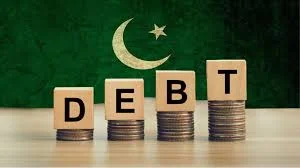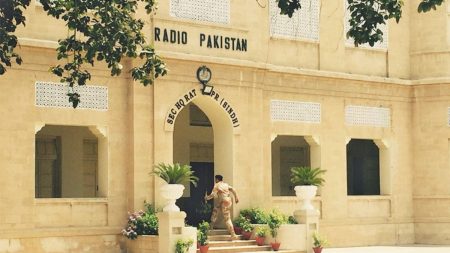Islamabad, Mar 2025: Pakistan’s Central Government Debt Surpasses Rs. 72 Trillion in January 2025. The federal government’s total public debt stock witnessed an 11.2% increase on a year-on-year (YoY) basis in January 2025.
Pakistan’s Central Government Debt ,reflecting a significant rise compared to the same period last year, according to the latest figures from the State Bank of Pakistan (SBP).
As per SBP’s monthly report, the total debt surged to Rs. 72.123 trillion in January 2025, up from Rs. 64.842 trillion in January 2024, indicating a continuous upward trend in government borrowing and fiscal liabilities.
READ MORE:
Pakistani Rupee Stabilizes Against US Dollar, Weakens Further Against Euro
On a month-on-month (MoM) basis, the total public debt stock climbed by 0.7%, rising from Rs. 71.647 trillion in December 2024 to its current level in January 2025.
Domestic Debt Sees an 18% Surge
The report also highlights a substantial increase in domestic debt, which grew by 18% over the past year. The central government’s domestic debt escalated from Rs. 42.626 trillion in January 2024 to Rs. 50.243 trillion in January 2025, reflecting a notable rise in internal borrowing.
On a monthly basis, the domestic debt also expanded by 0.7%, underscoring the federal government’s reliance on domestic financing to meet fiscal needs.
Long-Term Debt Rises, Short-Term Debt Declines
A deeper analysis of the debt composition reveals that long-term public debt increased significantly from Rs. 34.147 trillion in January 2024 to Rs. 41.825 trillion in January 2025, showcasing the government’s preference for long-term financial instruments to manage its debt portfolio.
Conversely, short-term debt witnessed a marginal decline, falling from Rs. 8.375 trillion to Rs. 8.352 trillion over the past year, indicating a slight shift away from short-duration borrowing mechanisms.
Rising Debt and Economic Challenges
The continuous rise in public debt raises concerns about Pakistan’s fiscal sustainability, particularly as the government struggles with economic reforms, inflation control, and external liabilities.
The surge in domestic debt further highlights the growing reliance on internal borrowing, which could put additional strain on liquidity and financial stability.
Experts emphasize the need for effective debt management strategies to ensure that borrowing remains sustainable and does not hinder long-term economic growth.
With the debt burden increasing steadily, policymakers will need to focus on fiscal discipline, revenue generation, and economic reforms to address Pakistan’s rising debt challenges.









